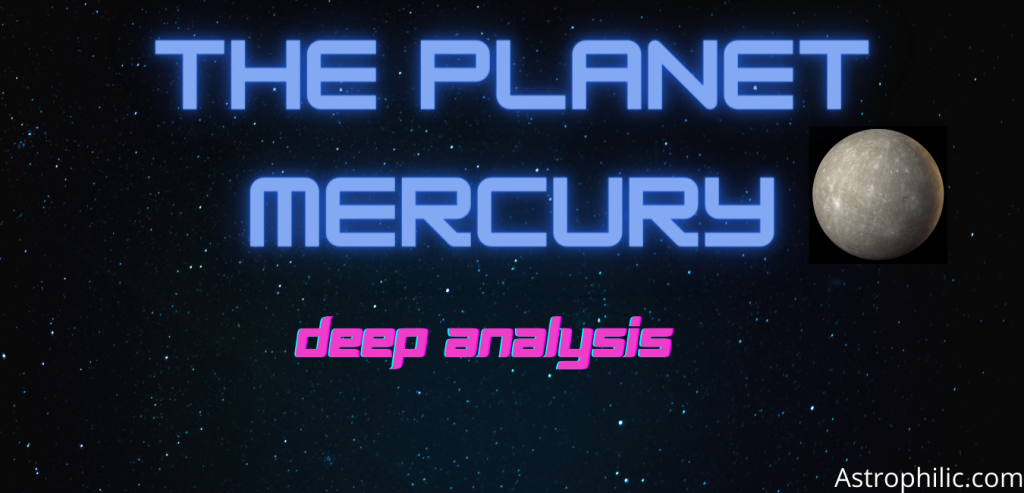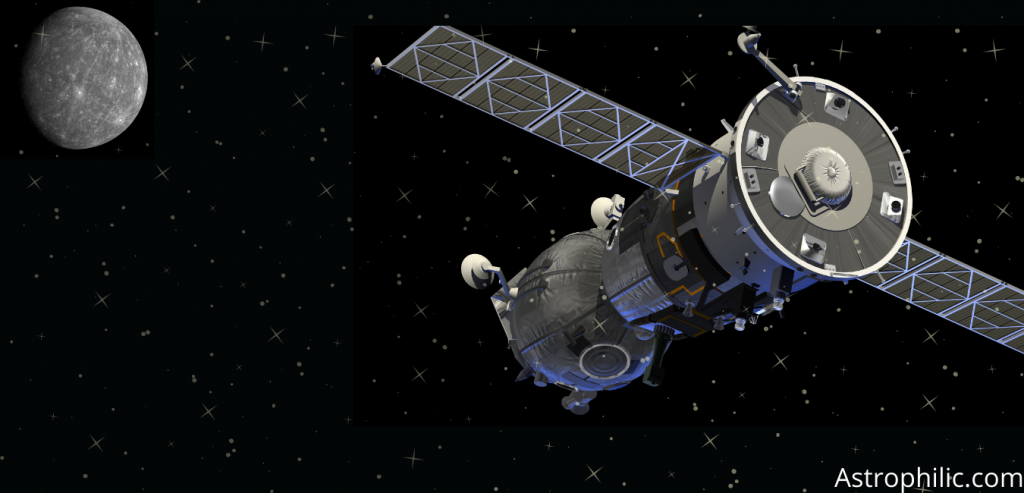

Table of Contents
Introduction to the planet Mercury :
In our solar system, the smallest planet, which is nearest to the Sun, is Mercury. Mercury is slightly larger than Earth’s Moon. Thus, the innermost planet of the solar system and the eighth in size and mass is Mercury. Its smallness makes the most elusive of the planets visible to the unaided eye. Even in more recent eras, many sky observers passed their entire lifetimes without ever seeing Mercury. Let’s do the planet Mercury’s analysis in detail with this article.
Who and how discovered Mercury?
Mercury is the five classical planets visible with the naked eye and named after the swift-footed Roman messenger god. It’s unknown exactly when discovered the Earth -it was first observed through telescopes in the seventeenth century by astronomers Galileo Galilei and Thomas Harriot. There is no single person who is credit with the discovery of Mercury. You can see Mercury in the night sky without using a telescope or binoculars.
Missions to the Mercury:
The two spacecraft launched by NASA have visited Mercury. Mercury is the fastest orbiting planet in our solar system.
About the Mariner-10 mission:
Mariner-10 was the seventh successful launch in the Mariner series and the first spacecraft to visit Mercury. The launched mission is on 3 November 1973. This first mission helped the planet Mercury’s analysis for the scientists.

About the MESSENGER mission:
MESSENGER launched on 3 August 2004 and was injected by the spacecraft into solar orbit 57 minutes later. The solar panels are then deploying, and the spacecraft began sending data on its status.
About the BepiColombo:
BepiColombo is the joint space mission by the European Space Agency and Japan Aerospace Exploration Agency. It is currently launched in 2018 and aimed to reach Mercury in December 2025.
How big is Mercury?
Mercury is the eighth smallest planet in our solar system, and it is a little bigger than Earth’s Moon. Mercury is a rocky surface when we see deep inside, and it has heavier material like iron. We can make Mercury earth with more than eighteen Mercury’s. When you compare the weight of the Moon and Mercury, then it weighs more than the Moon.
How hot is Mercury?
As we know that, Mercury is the closest planet to the Sun, which spins slowly and does not have enough atmosphere to absorb heat.
The temperatures may vary at night -279 Fahrenheit and during the day time 801 Fahrenheit. Mercury’s sky will be dark because it can’t spread the light due to a lack of atmosphere.
The surface of Mercury:
Mercury’s surface looks like a moon. The MESSENGER spacecraft revealed that Mercury has a unique landform, more smooth plains, and surface compositions (low in iron and high in sulfur), unlike those measured on the Moon. Mercury’s surface is rich in sulfur, and it is about 20 times richer than the surface of Earth, the Moon, and Mars. We do the planet Mercury’s analysis further with its atmosphere.
What is Mercury’s atmosphere made of it?
The atmosphere of Mercury is tenuous in the Solar System. Mercury’s atmosphere is made of hydrogen, helium, oxygen, sodium, calcium, potassium, and water vapour. Mercury possesses a thin exosphere of atoms blasted off the surface by the solar wind and striking meteoroids instead of an atmosphere. Mercury’s exosphere is composed of oxygen, sodium, hydrogen, helium, and potassium.
Formation of Mercury:
Mercury formed 4.5 billion years ago when gravity pulled swirling gas and dust together to create the small planet nearest to the Sun. You can see that Mercury has a central core, a rocky mantle, and a solid crust like its fellow terrestrial planets. Mercury in the form made of iron-rich materials. Mercury collects the nebulous pieces to form its atmosphere.
Orbit and Rotation of Mercury:
Mercury slowly spins on its axis and completes one rotation every 59 Earth days. Mercury is highly eccentric, and egg-shaped orbit takes the planet from the Sun. When Mercury moves faster in its elliptical orbit around the Sun (and it is closest to the Sun), each rotation by sunrise will not accompany and sunset like most other planets.
Observational challenges of Mercury:
Mercury’s atmosphere is of Earth’s turbulent atmosphere, which blurs the view. The Mariner-10 and MESSENGER missions have been the only missions that have made close observations of Mercury. The current interest in Mercury derives from the word unexpected of Mariner-10. Mercury rises and sets in the sky together with the Sun when the golden time for astronomical observations is at night.
When and how can we see Mercury?
Mercury was two separate objects. It appears as a bright “star” with a golden hue. In the evening star appears in the western sky, setting about an hour after the Sun. It appears in the eastern sky as a morning star, rising about an hour before the Sun. Space lovers also do the planet Mercury’s analysis from the Earth.
Mercury plans:
The future spacecraft exploration of Mercury is to continue with the joint ESA-JAXA BepiColombo mission. BepiColombo was the first to deliver two spacecraft into orbit, the Mercury Planetary Orbiter and the Mercury Magnetospheric Orbiter. BepiColombo will build upon MESSENGER’s results and provide unique observations that will lead to discoveries. Mercury science community is vital to inform future science strategy documents and decisions.
www.astrophilic.com
Interesting Facts about the Planet Mercury:
- Mercury doesn’t have any moons or rings.The smallest, as well as the closest planet to the Sun, is Mercury.
- The weight on Mercury would be 38% of the weight on the Earth.In a day, the surface of Mercury lasts 176 Earth days.
- In a year, Mercury takes 88 Earth days.
- It’s not known who discovered Mercury.
Not only is Mercury the smallest planet, but it is also shrinking: It is a very, very slow process, and Mercury is getting smaller every day. It estimates the planet is about 9 miles shorter than we told you it was a slow process (four billion years ago).
Mercury’s orbits are the Sun faster than other planets: The planet’s closeness to the Sun makes Mercury’s orbit shorter than any different solar system planet.
The second densest planet is Mercury: Mercury is very thick, even though the Earth is small. Thus, each cubic centimeter has a density of 5.4 grams, with only the Earth having a higher density.
www.astrophilic.com
Frequently asked questions related to Mercury:
Does Mercury have any moons?
Astronomers believe the Mercury planet is too small, and it has weak gravity, so it can’t hold a moon.
Have humans ever traveled to Mercury?
No. Mercury is so close to the Sun that it has one of the harshest environments for us humans.
Does Mercury have water?
The MESSENGER probe confirmed some small ice deposits in some of Mercury’s craters shaded from the Sun. In the study about the planet, only a couple of un-crewed investigations are sending to Mercury.

